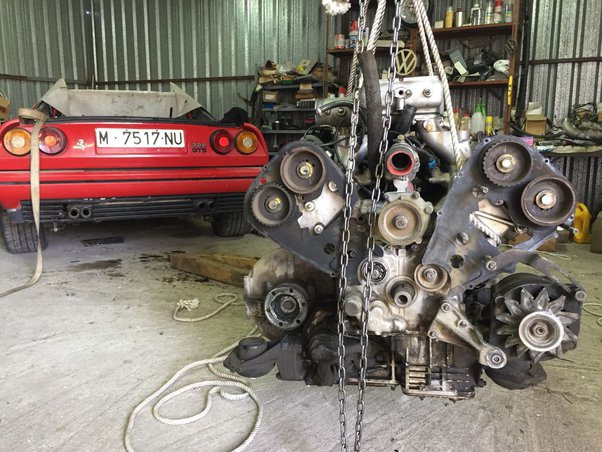Exploring Engine Weight: How Heavy is an Engine?
Engines are the powerhouses of various machines, from vehicles to industrial equipment. One crucial factor that often sparks curiosity is the weight of an engine. Understanding the weight of an engine is essential for design, installation, and operational considerations. In this comprehensive article, we delve into the intricacies of engine weight, factors influencing it, and comparisons across different types of engines.
1. Section 1: Understanding Engine Weight

Understanding Engine Weight
When it comes to the weight of an engine, several factors contribute to the final number. These factors include:
Engine Type and Purpose: Different types of engines, such as internal combustion engines (ICE), electric motors, and turbines, vary in weight due to their design and functionality.
Size and Displacement: Generally, larger engines with higher displacement tend to be heavier due to the increased number of components and materials required.
Materials Used: The choice of materials significantly impacts engine weight. For instance, engines with aluminum components are lighter than those with cast iron parts.
2. Section 2: Comparing Engine Weights

Comparing Engine Weights
Let's compare the weights of engines commonly found in various applications:
|
Engine Type |
Weight Range |
Example Application |
|
Small Car ICE |
200 - 400 kg (440 - 880 lbs) |
Compact vehicles |
|
Truck Diesel Engine |
800 - 1,500 kg (1,760 - 3,300 lbs) |
Heavy-duty trucks |
|
Electric Car Motor |
100 - 300 kg (220 - 660 lbs) |
Electric vehicles |
|
Gas Turbine |
1,000 - 5,000 kg (2,200 - 11,000 lbs) |
Aircraft propulsion |
|
Marine Diesel Engine |
5,000 - 20,000 kg (11,000 - 44,000 lbs) |
Ship propulsion |
3. Section 3: Factors Influencing Engine Weight
Power Output: Higher power output often requires larger components, which can contribute to increased weight.
Cooling Systems: Engines with advanced cooling systems, like liquid cooling, might have additional components, affecting their weight.
Emission Control: Modern engines incorporate emission control systems that can add to the overall weight.
Technological Advancements: New technologies, such as lightweight materials and efficient designs, can help reduce engine weight.
4. Section 4: Importance of Engine Weight
Engine weight holds paramount importance due to its implications:
Performance: A lighter engine can enhance overall vehicle or equipment performance, including acceleration and handling.
Fuel Efficiency: Reduced engine weight can lead to improved fuel efficiency, contributing to cost savings and environmental conservation.
Payload Capacity: In applications like trucks and aircraft, engine weight directly impacts payload capacity.
Installation and Maintenance: Heavier engines might require specialized equipment for installation and maintenance.
5. Section 5: Achieving Weight Efficiency
Advanced Materials: Manufacturers are exploring materials like carbon composites to create lightweight yet sturdy engine components.
Design Optimization: Engineers focus on efficient design to minimize excess weight while maintaining structural integrity.
Hybridization: Hybrid powertrains combine internal combustion engines with electric components, optimizing the balance between power and weight.
6. Section 6: Future Trends in Engine Weight
Electric Propulsion: Electric engines are generally lighter than their traditional counterparts, driving weight reduction in transportation.
Additive Manufacturing: 3D printing allows intricate designs that optimize weight distribution within engine components.
Autonomous Technologies: As vehicles become more autonomous, lighter engines might become a key factor in ensuring optimal energy usage.
In conclusion, the weight of an engine varies widely depending on its type, purpose, and various influencing factors. Engine weight plays a pivotal role in determining performance, efficiency, and practicality across diverse applications. As technology continues to advance, the quest for lightweight yet powerful engines remains a driving force in the realms of engineering and innovation. Understanding how heavy an engine is goes beyond mere curiosity – it's a fundamental consideration shaping the future of transportation and machinery.
By delving into the intricacies of engine weight, we've unveiled the complex web of factors that contribute to this crucial characteristic. From traditional internal combustion engines to cutting-edge electric propulsion systems, the weight of an engine is a dynamic aspect that will continue to shape the landscape of industries worldwide.